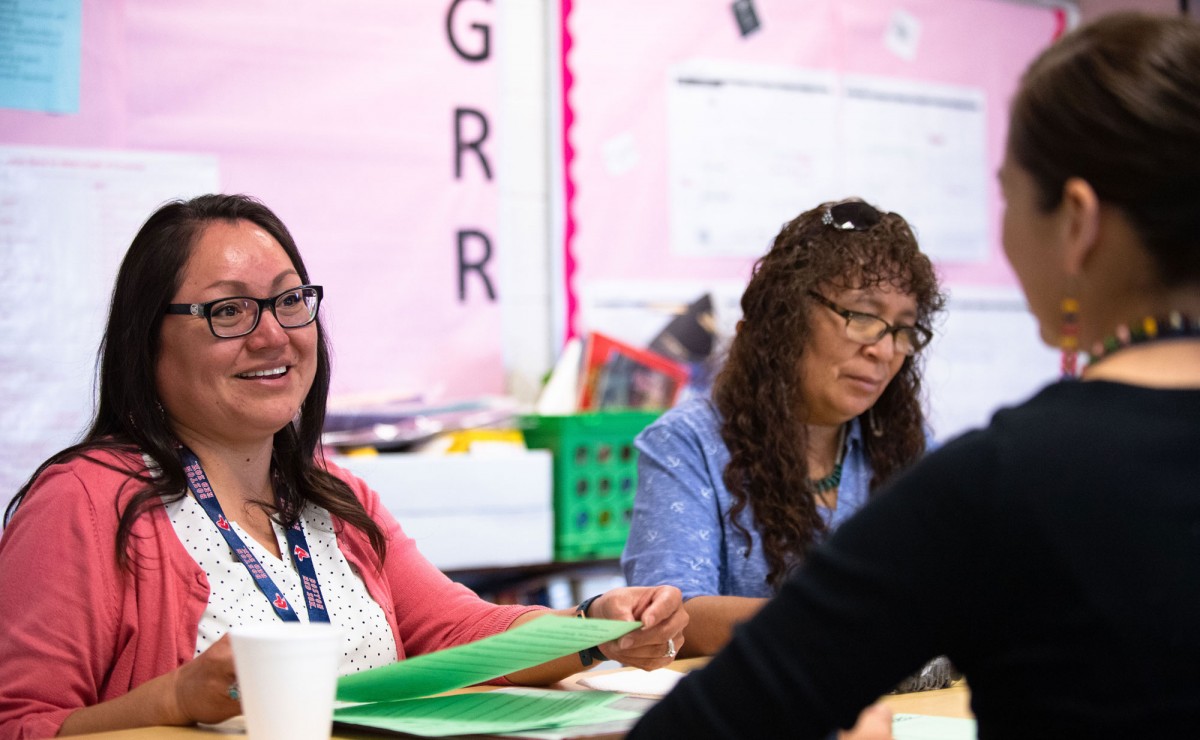Why We Are Talking About Curriculum Implementation Right Now
June 9, 2020

By: NIET CEO Dr. Candice McQueen
Over the past few years, the need for broad-scale curriculum reform and the adoption of high-quality materials has gained increasing momentum – and for good reason. Even the best teachers will find it hard if not impossible to push students to master state standards without curriculum that supports them. Many educators are spending hours of their time each week looking for better texts, activities, and materials they can use. But too often, new curriculum has been a one-off project and disconnected from the practice of teaching, and there is little embedded professional development for teachers or buy-in from leaders to make it effective.
NIET's partners – from Knox County in Tennessee to Gadsden and Avondale Elementary School Districts in Arizona to Somerset and Grand Prairie ISD in Texas to Goshen Community Schools in Indiana to districts across Louisiana like DeSoto, Caddo, and Rapides Parish Public Schools and Algiers Charter School – are showing a better way forward that blends the "what" to teach with "how" to teach it. They are proving that it's not just possible to strengthen both curriculum and instruction at the same time but that it is necessary to do so, and it creates a support network and ecosystem where teachers and students are more successful. Last fall, we started closely studying those partners and interviewing educators about their experiences to share some insights with the field on how to implement high-quality curriculum in a way that dramatically improves teaching and impacts student achievement.
And then COVID-19 hit.
Educators are now regrouping on what next year will look like in a number of ways, and that list is only increasing as the summer starts and we wrestle nationwide with systemic inequities and continued trauma and health concerns. Budgets are tight, and districts are facing more challenges than ever. Every day, we work alongside schools who are making hard decisions as they plan for next year, and there are no easy answers. Any number of pressing needs for the upcoming year could take priority.
But here is why we wanted to release a paper and recommendations about curriculum implementation right now, and we think it is worth considering for a number of reasons:
- High-quality curriculum matters, and it is most effective when it is paired with high-quality instruction. Because high-quality curriculum is a standards-aligned curriculum that meets rigorous college and career readiness expectations and provides a scope and sequence, questions, text, materials, and resources that move students' thinking to the highest levels of depth of knowledge, instructional expertise also matters. That is true whether students are learning in a virtual or in-person environment.
- Those districts who already have or will be shifting to a high-quality curriculum soon should dig deeply into their implementation and how they support educators. This paper was written with those places in mind, and it has recommendations and action steps for district, school, and teacher leaders. While the strategies and systems are needed regardless of modality, what they look like and sound like in a virtual setting could be a little different, so we've added some virtual strategies to consider.
- We also recognize that as a result of the disrupted learning this spring, achievement gaps are likely widening. Doubling down with a curricula that isn't high-quality or oversimplifying materials and underdoing expectations will not help students get caught up – in fact, it will probably make the gaps worse. Districts are quickly identifying new resources and materials to address learning needs and to support virtual instruction. Teachers must be supported to use these instructional materials effectively and to integrate instructional materials with strong delivery whether in-person or in a virtual environment.
- If a district has not adopted a high-quality curricula, this is the time to review that decision as districts are taking a comprehensive review of available funding and multiyear plans.
Right now, it can be easy to take our eye off the ball with everything that's going on. But what to teach and how to teach it is the cornerstone of what happens in schools every day and teacher effectiveness is still the key ingredient to student growth, regardless of whether that is virtual or in a physical building. This is what we have to center on now, and it's never too late to make sure we are getting that right.
Regardless of where you are in this moment, now is the time for a critical next step toward implementing high-quality curriculum. Those with high-quality curricula can use this paper to shore up implementation. Those who are considering adopting new curriculum can use the recommendations for a clear roadmap – built by those who have been there – to get started on your plan.
Even if this is not the exact right moment to adopt a new curriculum, this paper offers key reflections and advice on how to strengthen current material usage and will benefit any educator and school system. Others may determine this is exactly the right time to develop the structures and learning that will smooth the transition to a strong curriculum and provide a system of ongoing support. Regardless, these recommendations – which include ideas for implementation in a virtual environment – can make sure educators have the right combination of resources and supports to be maximally effective this year and every year. Don't let another year pass without taking a next step.